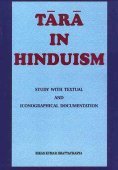Ritualism: 1 definition
Introduction:
Ritualism means something in the history of ancient India. If you want to know the exact meaning, history, etymology or English translation of this term then check out the descriptions on this page. Add your comment or reference to a book if you want to contribute to this summary article.
Images (photo gallery)
India history and geography
Source: archive.org: Nilamata Purana: a cultural and literary study (history)Ritualism refers to one of the various systems of belief and worship that once existed in ancient Kashmir (Kaśmīra) as mentioned in the Nīlamatapurāṇa.—The material expression of the religious thoughts intellectually held and emotionally felt—plays an important role in religion. This outward expression may consist in performing the sacrifices, worshipping the images of the gods, visiting the sacred places, undergoing austerities and muttering the names of the gods. The ritual in the early Vedic age consisted of simple prayer accompanied by simple sacrificial offerings to the gods who were just like near relatives to the worshipper. Then followed the complicated sacrificial system of the Brāhmaṇas in which the sacrifice attained the supremacy and became a net to capture the gods. How this supremacy was challenged and how the sacrificial cult gave way to other religious practices has been shown in the preceding chapter dealing with festivals and religious practices.

The history of India traces the identification of countries, villages, towns and other regions of India, as well as mythology, zoology, royal dynasties, rulers, tribes, local festivities and traditions and regional languages. Ancient India enjoyed religious freedom and encourages the path of Dharma, a concept common to Buddhism, Hinduism, and Jainism.
See also (Relevant definitions)
Full-text: Adhiyajnika, Padmamalavidhi, Antaryaga, Bahiryaga, Padmamala, Brahmana, Puja, Visishta, Mimamsa, Jivanmukta.
Relevant text
Search found 32 books and stories containing Ritualism; (plurals include: Ritualisms). You can also click to the full overview containing English textual excerpts. Below are direct links for the most relevant articles:
A History of Indian Philosophy Volume 1 (by Surendranath Dasgupta)
Part 6 - The Āraṇyakas < [Chapter II - The Vedas, Brāhmaṇas And Their Philosophy]
Part 10 - Sacrifice; the First Rudiments of the Law of Karma < [Chapter II - The Vedas, Brāhmaṇas And Their Philosophy]
Part 14 - Mīmāṃsā as philosophy and Mīmāṃsā as ritualism < [Chapter IX - Mīmāṃsā Philosophy]
Where < [October – December, 2003]
The Perspective of the Tantras < [September 1945]
Lal-Ded: Saint Poetess < [October – December, 2006]
The Buddhist Path to Enlightenment (study) (by Dr Kala Acharya)
1. Religious Background Sixth Century B.C. < [Chapter 4 - Comparative Study of Liberation in Jainism and Buddhism]
Expiatory Rites in Keralite Tantra (by T. S. Syamkumar)
1.5. Expiatory Rites in Mātṛsadbhāva < [Chapter 3 - Expiatory Rites in Kerala Tantric Ritual Manuals]
2. Temple Culture and Kerala Tantrism < [Chapter 4 - Socio-Cultural aspects of Expiatory Rites]
4. Ritual Gift as a Mode of Expiation < [Chapter 4 - Socio-Cultural aspects of Expiatory Rites]
Charaka Samhita and Sushruta Samhita (by Nayana Sharma)
Ritualism in the Medical Texts < [Chapter 8]
Medicine and Religion (Introduction) < [Chapter 8]
Concept of Oneness in the Upanishads (study) (by Chandra Shekhar Upadhyaya)
Position of Upaniṣads in Philosophical Literature < [Chapter 1 - Introduction]
Related products

